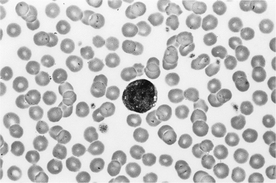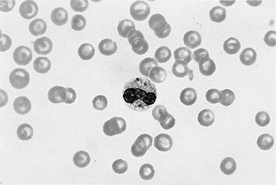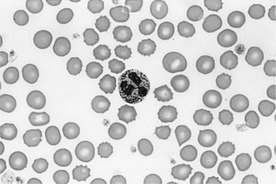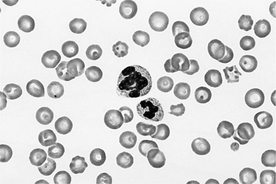11 ALTERED LEUKOCYTE MORPHOLOGY AND FUNCTION
1 What are reactive lymphocytes, or immunocytes?
Immunocytes are large-sized lymphocytes with intensely basophilic cytoplasm and occasionally a prominent nucleolus that appear similar to lymphoblasts. These cells may be more similar to plasma cells, with a clear Golgi area in basophilic cytoplasm, an eccentric nucleus, and even cytoplasmic inclusions (Russell bodies). These cells occur in low numbers, with most of the lymphocytes appearing normal. These reactive lymphocytes are observed in animals undergoing immune response, typically during infectious inflammatory diseases or after vaccination. The low number of these cells and the clinical history provide the convincing evidence that these lymphocytes are antigenically stimulated, not neoplastic (Figure 11-1).
2 What are toxic changes in neutrophils?
Cytoplasmic changes occur in blood neutrophils during intense inflammation from many causes (infectious or noninfectious). The toxic changes observed in neutrophils include Döhle bodies, diffuse cytoplasmic basophilia, cytoplasmic (“foamy”) vacuolization, and infrequently, toxic granulation (Figure 11-2). Döhle bodies are small (1-2 μ), lightly basophilic inclusions that occur in low numbers near the periphery of cytoplasm. Döhle bodies may also occur in low numbers of neutrophils in healthy cats.
6 What is the significance of giant neutrophils?
Segmented neutrophils that are up to twice the size of normal neutrophils, but with otherwise unremarkable morphology, are rarely observed on blood smears. This finding indicates dysgranulopoiesis, in which a mitotic cell division was likely skipped by an early precursor and larger neutrophils resulted. Giant neutrophils occur with inflammatory diseases and in cats with feline leukemia virus (FeLV) infection (Figure 11-4).
Stay updated, free articles. Join our Telegram channel

Full access? Get Clinical Tree






